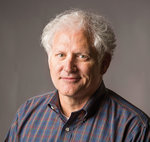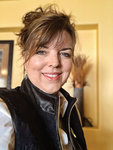









It’s been a year since the newsroom at the Springfield (Mo.) News-Leader began to work remotely. When the decision came down from parent company, Gannett, the staff was certain it would only be for a couple of weeks. They were well-poised to work in this way. Everyone had laptops and hotspot smartphones. They had Microsoft Teams and Zoom for meetings and collaboration. The workflow worked out.
“Of course, COVID and the lockdowns had a business effect as well, and one of the ways Gannett dealt with that was some furloughs, which was—at least from my perspective—better than the alternative,” said editor-in-chief Amos Bridges. “But it created a staffing crunch that we had to deal with.”
Having an agile newsroom team helped. “For example, our photographers cover a fair amount of breaking news, and just like everyone else, they’re ‘cross training’ and comfortable writing those stories,” Bridges said.
It’s interesting to see how COVID-19 has been covered in newspapers this year, especially the percentage of overall coverage the pandemic garnered. At the News-Leader, Bridges estimates that early on, it was easily 50 percent of all their content across sections. A year later, COVID-19 still warrants as much as a third of the content in each edition.
For some time now, a skeleton team has been coming into the newsroom. They’ve opted to be there, and Bridges said he’d like to soon return to the office a few days a week or abbreviated days—whatever proves smart and safe—but anticipates that the newsroom will have a “hybrid” model in the year ahead.
“They may work from home when that’s most convenient and then come in when they need to do some collaboration, when they need to meet with an editor, or if they’ll be more productive being in the room,” he said. “All of this has shown us that we are flexible and can work remotely pretty efficiently.”
To say that the year since has been tumultuous is an understatement. There is no unaffected news organization; none went unscathed. COVID-19 impacted every facet of the business: staffing and safety; workflow; content and coverage; audience, revenue, and advertising; production, printing, and distribution. Due to that, it’s important for us to check in with newsrooms across the country—one year later—as the pandemic still looms.
Beyond the Workflow
When COVID-19 traveled to Alaska, Anchorage Daily News publisher Andy Pennington knew that the first thing they needed to do was create a remote workflow. That was the easy part.
“We got the IT team on board right away and just focused on getting people the ability to work remote,” Pennington recalled. “Over time, this has caused a lot of strain on many of our employees. Many of our folks have kids, and working from home and managing school and work has been a challenge. Many of our employees didn’t have a great setup at home to work comfortably, so we needed to work through those challenges. I think that has been our biggest challenge—staying connected and helping the staff be as flexible as possible, all while dealing with the mental challenges COVID brings.”
Editor David Hulen explained how coverage and reader engagement changed: “From almost the beginning, we stopped using story comments on our news content. We began running reader forms on almost all of our COVID-19 content, asking readers for their questions and coverage suggestions.” Hulen said the responses to the queries—some 3,000 and counting—helped to inform and guide the paper’s coverage.
“We had a good year in 2020, for total audience…and growth of digital subscriptions,” he said. “We found that free coronavirus content converted readers, and we saw significant digital subscription growth through paths other than the paywall.”
Fortunately, the newspaper’s staff and turnover remained consistent with other years, but hiring and on-boarding proved challenging in a remote environment.
When advertising revenue was looking grim for a time, the publisher tapped both the Federal Paycheck Protection Program (PPP) and the COVID-19 Local News Fund (administered by the Local Media Foundation) to manage.
“Moving remote and doing everything by Zoom was the biggest challenge and continues to be,” Pennington said. “I believe this will also be the reason we are a better company moving forward. We want to offer the most flexible environment for our people. We want to resume some things that are more effective by being in person, but we are positioned to do things effectively remotely—or a combination of both. Our future workplace will certainly look different.”
A Newspaper’s Duty During a Pandemic
When E&P spoke with Jeff Pratt in early March, the executive editor at The Sentinel in Carlisle, Pa., the newsroom was putting the finishing touches on a series of articles. Each of the articles had COVID-19 in common; they would publish the following week in the newspaper, marking the one-year anniversary since the virus came to the county. Within a week of that announcement, the entire newsroom began working remotely. That continues to this day.
It was a fairly smooth transition for The Sentinel’s owner, Lee Enterprises. The company saw to it that its newspapers had an emergency contingency plan in place, should they have to produce the newspaper remotely. The production workflow proved less tricky to solve than how the staff would communicate and collaborate. They used a chat app and FaceTime to communicate with one another and with the design and production departments. When it was deemed safe to meet outdoors and from a safe distance, they’d meet up at a local township park. It was good to see each other, to talk face to face: about the work, about the job, but also about how each member of the newsroom was being personally impacted by the pandemic, Pratt said.
COVID-19’s impact on the local community was profound. It was also a summer of civil unrest as America wrestled with racial injustice. And it was an election year. It was impossible to cover it all, Pratt admitted.
Coverage was further complicated by company-wide furloughs that took place over the course of a three-month period. It left the newsroom down at least one person on any given week, and yet they mustered.
According to Pratt, digital subscriptions over the past year have doubled. He credits the newsroom’s work on those three areas of coverage and public interest: the pandemic, the election and racial justice protests.
These have been heavy, emotional topics for Sentinel reporters, and for journalists everywhere, to cover. Pratt said they have internal conversations about the health and well-being of their newsrooms. It’s especially important to be sensitive to what the staff may be enduring outside of their professional lives—dealing with the virus, quarantines, home schooling, being caretakers for family members, or even living in relative isolation.
Looking back, he’s proud of the newsroom’s work on COVID-19 this past year.
“Reporters and editors, like me, are fueled by having an impact,” he said. “We want to know that what we’re doing matters, and this past year, we’ve seen our vital importance.”
At the Southern California News Group (SCNG), president and publisher Ron Hasse called 2020 a “news marathon.”
“It started in January with the tragic death of Kobe and Gianna Bryant and seven others, which was very much a local story for us,” he said. “Then came COVID-19, the fight for racial justice, Lakers championship, Dodgers World Series, wildfires, November elections and more wildfires. It just didn’t stop.”
Still, COVID-19 dominated the majority of their coverage.
“Along with ongoing local reporting, we launched a daily COVID-19 infographic in March 2020, and a dedicated Coronavirus Update newsletter that has over 54,000 opt-ins,” Hasse said. “We also overhauled our features coverage, relaunching it as Playlist, and shifted our Sunday housing coverage to focus more on the economy and the impact COVID is having on it.”
SCNG publishes 11 daily papers, serving audiences across Southern California, three Spanish-language publications, countless weeklies and specialty products. Although Hasse said their main advertising priorities did not change, businesses like live entertainment, amusement parks and travel were negatively impacted by COVID-19. The bright side is that they saw a pick-up in the healthcare, insurance and finance categories. And as businesses began to open back up, some of their traditional advertisers also returned.
“The value of our content and journalism is at an all-time high, and we have positioned our go-to-market messaging to emphasize that our customers are not simply buying ads, but funding local journalism,” Hasse said. “The quality work coming from our newsrooms enable us to approach every client interaction with pride and confidence.”
Letitia “Letti” Lister is the publisher of the Black Hills Pioneer in Spearfish, S.D. E&P asked her about her paper’s role during the pandemic.
“When you’re a smaller daily paper, there’s always a challenge to provide the best news as you can, as timely as you can,” she said. That mission didn’t waver even when COVID-19 came to the region. Paramount for the publisher was to learn and disseminate information that would keep the community and the newspaper’s staff safe.
Fortunately, the newspaper isn’t saddled with hobbling debt. Lister never liked the idea of borrowing money, but they tapped into the PPP program when it appeared that advertising dollars—down 40 percent by June 2020—weren’t going to make a quick comeback.
“Pretty early on, we felt like it might be several months to a year before we could start to recover,” Lister said. “And then it started to gradually get better. We would be finishing the year down, by about 17 percent, for ad revenue. But here’s the positive for us: Our circulation revenue went up by 26 percent.”
The Plight of Alt-Weeklies
“Once COVID hit, we knew we had to make some adjustments as quickly as we could,” Andrew Zelman recalled. Zelman is the publisher of the Cleveland Scene, an alt-weekly with a downtown audience and a readership from surrounding northeast Ohio communities. The local newspaper is published by Euclid Media Group, which publishes seven titles.
“One of our largest revenue generators—events—went away,” Zelman said. “We had to cancel or postpone pretty much every event we had lined up for the rest of the year, which was terrible and a huge problem for us because it’s a huge generator, but the worst thing you could do was gather people.
“There were stay-at-home orders, places closing, and so much of our revenue—outside of events—was, again, predicated on people gathering in places, such as concert venues, art exhibits, museums, restaurants, movie theaters,” Zelman continued. “We knew those businesses weren’t going to be happening for quite a while, and if those places weren’t open, or were struggling to stay in business, they certainly wouldn’t be spending advertising dollars with us. Everything dropped off almost immediately. We also knew that the places where we distribute the paper—coffee shops, restaurants and other venues—wouldn’t be open. Everything just stopped.”
The repercussions of distribution disruption and a halt to advertising—with no discernable end in sight—nearly destroyed the print edition and profoundly changed the organization. Zelman said they regrettably had to lay off a few members of the staff and cut the freelance budget, but they were in “survival mode.”
The entire newsroom began working remotely, writing exclusively for the paper’s website and social media channels. Even the content of the newspaper was impacted. So much of the editorial had been devoted to the town’s events and businesses, and those were shuttered, too.
The staff at the Cleveland Scene made a cultural and marketing shift, rethinking the digital platform and driving readers to it. They retooled some of the formerly in-person events and created virtual alternatives, including a popular culinary-themed series highlighting Cleveland’s restaurants.
“We had always been reluctant to sell sponsored content on our sites, and we have started to do that,” Zelman said. “But we have strict standards; it has to be labeled as such. It’s clear to our readers that it’s sponsored content, but we weren’t in a position to turn down the revenue.”
The publisher also tapped two rounds of the Federal PPP funding. “This was company-wide, not just in Cleveland,” he explained. “In order to sustain our business, we felt there was absolutely a need, and it allowed us to keep most of the employees we had and even bring back some employees. It was a lifeline in a lot of ways for us.”
As a free publication that was historically supported by advertising alone, the paper had never asked much of its readers, but it became clear that it needed help. The Cleveland Scene created the Cleveland Scene Press Club, which allows readers to financially support the title, while enjoying some special perks and swag. The publisher replicated this membership model across all its titles, and it was particularly successful in the Cleveland market.
It was nearly three months until the Cleveland Scene was able to go to print again, but frequency was forever changed. Over the course of the paper’s 50-year history, it had always been a weekly. COVID-19 changed that, too. Now, the title is printed every other week.
For some news organizations, the losses they’ve suffered are not merely measured in ad dollars or digital subscriptions. They’re far more profound.
“Where do I start?” Lisa Cunningham, the editor-in-chief of Pittsburgh City Paper, pondered. “I won’t lie. It’s been a really rough year.”
As an alt-weekly, the Pittsburgh City Paper doesn’t merely chronicle what happens in the city limits, it’s an organic part of the community itself. Much of the content for the advertising-supported title focused on the city’s thriving arts, culinary and entertainment scene. The virus forced many of those businesses to shutter—at least temporarily—taking with them not only advertising support but the content the paper typically covered. Still, they got the newspaper to the press each week.
“Although we increased our web stories online, we never wanted to stop printing altogether,” Cunningham said. “We did substantially cut our page count back, just because of costs. We lost a substantial amount of revenue, so we had to figure out ways to cut costs. Page count was one of them, and cutting back on circulation, too, including the number of copies at each distribution point.”
Without arts and entertainment to cover, Cunningham led the newsroom in a new direction: rebranding the newspaper as a reliable source of local hard news, primarily through its coverage of local social justice protests. One of their photojournalists covered at least 50 such protests over the course of the year.
“We found our readers really turned to us as the news source in town…We also broke an important story about local police lying about using rubber bullets and chemical munitions,” Cunningham said. “These are stories we’ll cover even when the arts and entertainment come back.”
Like so many other publications, the Pittsburgh City Paper tapped the first round of PPP loans. It helped to retain staff until June, when furloughs became inevitable. Managing editor Alex Waters Gordon was one of six furloughed employees. He died by suicide in October 2020.
“The heavy George Floyd and Breonna Taylor protests, in addition to Alex’s suicide and the pandemic have taken a really heavy toll on the mental health of our reporters. It’s important that we take care of them,” Cunningham said.
For newsrooms and everyone else around the world, the story of COVID-19, after all, is its tragic legacy. Following the death of their colleague, Cunningham enlisted a therapist to help the staff cope with the grief.
“I try to be open, to let everyone know that they can talk to me,” she said. “The company set up an EAP (Employee Assistance Program), which we did not have before. I wish we did, but at least we’re taking the right steps now to make that available.”
Gretchen A. Peck is an independent journalist who has reported on publishing and journalism for more than two decades. She began her reporting career covering municipal government at a suburban Philadelphia daily and also served as an editor-in-chief/editorial director for a magazine publisher. She has contributed to Editor & Publisher since 2010 and can be reached at gretchenapeck@gmail.com.
Comments
No comments on this item Please log in to comment by clicking here